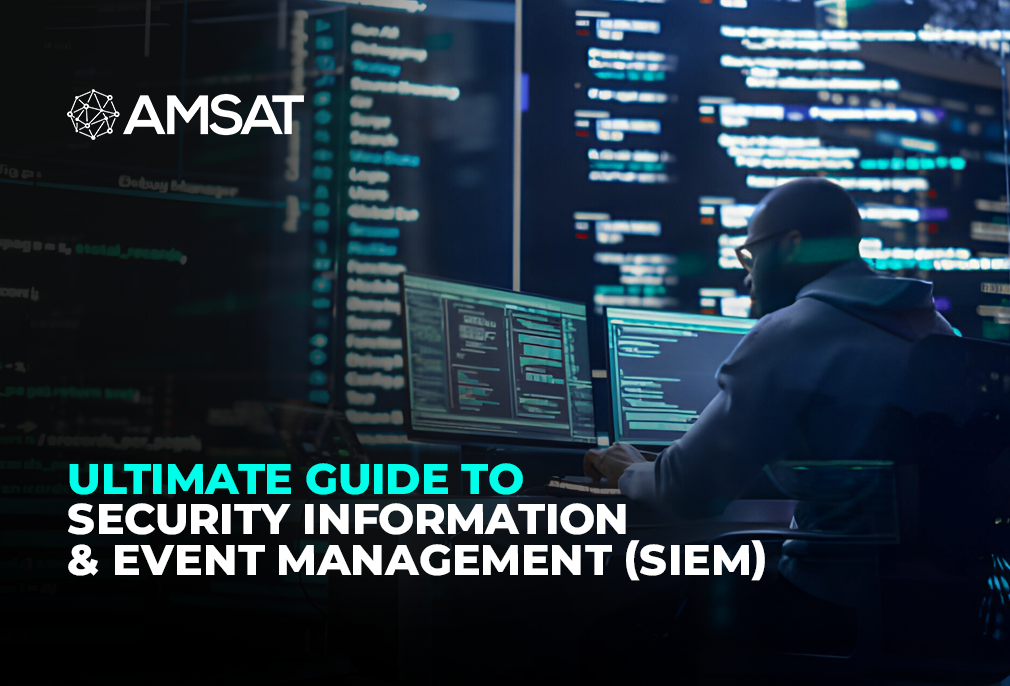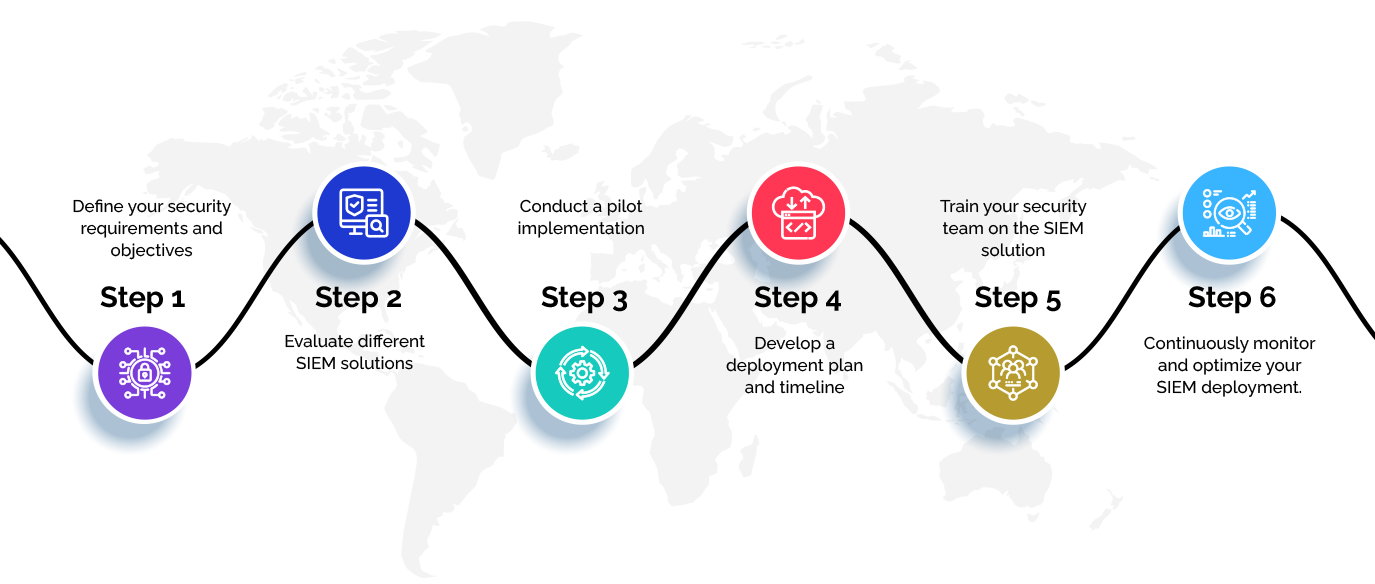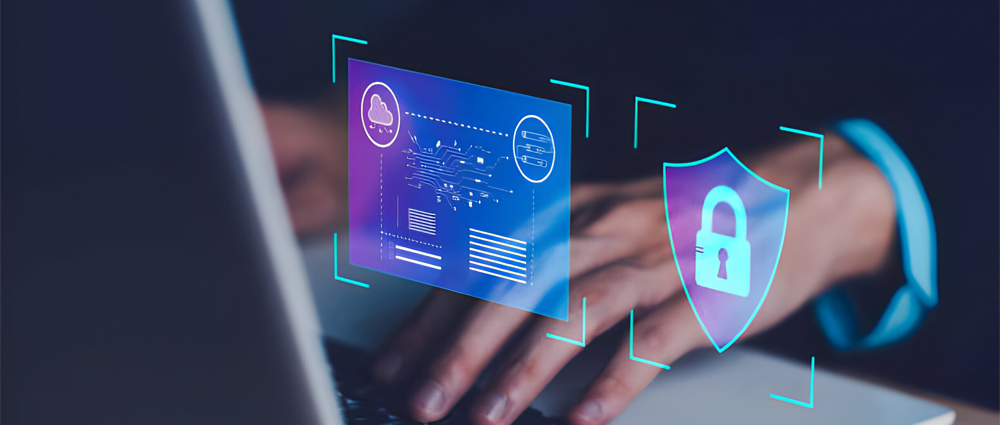Latest Blogs

By AMSAT Feb 02, 2024
Ultimate Guide to Security Information and Event Management (SIEM)
In today’s ever-escalating cyber landscape, businesses encounter a fusillade of threats, from devastating malware attacks to data breaches and social engineering. But navigating this complex environment is not a walk in the park—it requires watchful monitoring and effective security solutions. That’s where Security Information and Event Management (SIEM) comes into play.
What is SIEM?
SIEM is a powerful tool that collects, aggregates, and analyzes data from various security sources across your IT infrastructure. This includes firewalls, intrusion detection systems (IDS), endpoints, applications, and cloud environments. By centralizing and correlating this data, SIEM paints a comprehensive picture of your security posture, enabling you to detect and respond to threats swifter and more effectively.
Key Features of SIEM:
- Log Management: Consolidate logs from various sources for centralized analysis.
- Security Event Monitoring: Detect suspicious activity in real-time through continuous log monitoring.
- Incident Response: Facilitate quick response to security incidents through alerts and investigation tools.
- Threat Intelligence: Leverage threat intelligence feeds to gain insights into emerging threats.
- Compliance Reporting: Generate reports to meet compliance requirements (e.g., PCI DSS, HIPAA).
Benefits of Implementing SIEM:
- Improved Threat Detection: Identify and respond to security incidents faster.
- Enhanced Security Visibility: Gain a centralized view of your security posture.
- Reduced Investigation Time: Streamline investigations and shorten security breach response times.
- Better Compliance Management: Simplify compliance reporting with centralized log management.
- Simplified Security Operations: Streamline workflows and improve operational efficiency.
Advanced Event System
Modern SIEM solutions go beyond basic log management, incorporating advanced event correlation techniques. This allows them to identify relationships between seemingly unrelated events, providing deeper context and helping you distinguish genuine threats from noise.
SIEM as a Service (SIEMaaS):
Traditional SIEM deployments require significant infrastructure and expertise. However, SIEM as a Service (SIEMaaS) offers a cloud-based alternative, eliminating the need for on-premise hardware and management. This model benefits organizations of all sizes, especially those with limited IT resources, by:
- Reducing upfront costs: Pay-as-you-go model eliminates the need for substantial upfront investments.
- Faster deployment: Get started quickly with minimal configuration and maintenance.
- Scalability: Easily scale your SIEM solution to meet evolving security needs.
- Expertise access: Leverage the vendor’s expertise in managing and maintaining the SIEM environment.
Managed SIEM Services:
For organizations seeking further support, Managed SIEM services provide comprehensive solutions. These services involve a team of security experts who:
- Monitor and manage your SIEM environment 24/7.
- Analyze logs and identify potential threats.
- Investigate and respond to security incidents.
- Provide ongoing guidance and support.
Choosing the Right SIEM Solution:
Selecting the right SIEM solution depends on your specific needs and resources. Consider factors like:
- Organization size and security complexity.
- Budget and deployment options (on-premise, cloud, hybrid).
- Features and functionalities required.
- Ease of use and integration with existing security infrastructure.
Statistics Highlighting the Importance of SIEM:
- According to IBM X-Force Threat Intelligence Index 2023, 68% of organizations experienced a security incident in the past year.
- According to the 2023 cost of a data breach report by IBM and the Ponemon institute, the global average cost of a data breach in 2023 was $4.45 million, a 15% increase over 3 years.
- As per research by Forrester, organizations using SIEM can reduce security incident response time by up to 50%.
Implementing SIEM: Essential Steps

- Define your security requirements and objectives.
- Evaluate different SIEM solutions.
- Conduct a pilot implementation.
- Develop a deployment plan and timeline.
- Train your security team on the SIEM solution.
- Continuously monitor and optimize your SIEM deployment.
Summary
In today’s digital age, SIEM is no longer a luxury but a necessity for any organization serious about securing its data and assets from falling into the hands of malicious actors. Implementation of SIEM solutions tailored to your needs can help you gain valuable insights into your security posture, allowing you to proactively identify and respond to threats, ultimately reducing risk and protecting your business. Organizations can only ignore SIEM at their own peril.
TAGS
- Cyber Threats
- SIEM
- Cyber Security
Recent Blogs
Ready to Get Started?
Our specialists are ready to tailor our security service solutions to fit the needs of your organization.











